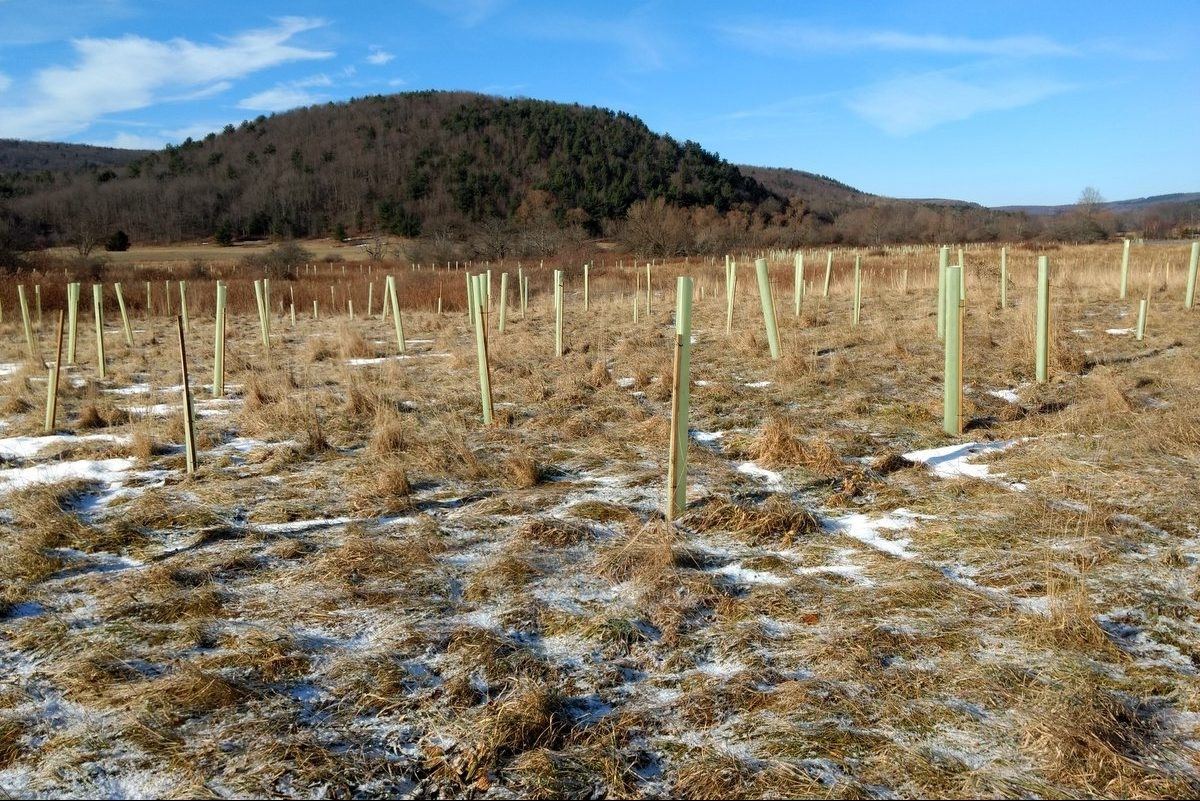
Habitat restoration plays a pivotal role in bringing back the balance to ecosystems that have been disrupted or destroyed. This process involves various strategies, from planting native species to removing invasive ones, all aimed at reviving natural habitats for wildlife. With environmental concerns on the rise, understanding the ins and outs of habitat restoration has never been more critical. Whether it's a forest, wetland, or coastal area, each restoration project holds the key to supporting biodiversity and combating climate change. In this post, we'll dive into 17 fascinating facts about habitat restoration, shedding light on its significance, the challenges faced, and the remarkable benefits it offers to our planet. Perfect for nature enthusiasts and conservationists alike, these insights will deepen your appreciation for the efforts made to heal our world's natural spaces.
What is Habitat Restoration?
Habitat restoration involves returning a natural environment back to its original condition after it has been damaged or destroyed. This process is crucial for the survival of many species and the overall health of our planet.
- Habitat restoration aims to reverse environmental degradation by reintroducing native plants and animals, removing invasive species, and repairing ecosystems that have been harmed by pollution, deforestation, or natural disasters.
Why is Habitat Restoration Important?
Restoring habitats is vital for maintaining biodiversity, which is the variety of life in the world or in a particular habitat or ecosystem. It also supports ecosystem services that benefit humanity, such as clean air and water, pollination of crops, and climate regulation.
- Healthy ecosystems can better withstand and recover from a variety of disasters, including floods, droughts, and wildfires, making habitat restoration a key component in adapting to and mitigating the effects of climate change.
Types of Habitat Restoration
Different ecosystems require different restoration strategies. From forests and wetlands to rivers and coastal areas, each habitat has unique needs and challenges.
-
Wetland restoration often involves reestablishing water flow and planting native vegetation to filter pollutants and provide habitat for wildlife.
-
Forest restoration might include replanting trees that were lost to logging or wildfire and removing invasive species that threaten native biodiversity.
-
River and stream restoration focuses on improving water quality, reconnecting rivers with their floodplains, and ensuring fish can migrate freely.
Success Stories in Habitat Restoration
Across the globe, there are numerous examples of successful habitat restoration projects that have brought ecosystems back from the brink of collapse.
-
In the United States, the restoration of the Florida Everglades has improved water quality, increased biodiversity, and helped stabilize populations of endangered species like the Florida panther.
-
The Loess Plateau in China is another success story, where efforts to restore degraded land have transformed a once barren landscape into a lush, green oasis, improving livelihoods for millions of people.
Challenges in Habitat Restoration
While the benefits of habitat restoration are clear, the process is not without its challenges. Restoration projects can be expensive, time-consuming, and complex.
-
One major challenge is ensuring that restored habitats are sustainable in the long term, requiring ongoing management and protection from future degradation.
-
Another issue is the potential for unintended consequences, such as the introduction of species that become invasive or the alteration of water flow in ways that negatively impact neighboring areas.
The Future of Habitat Restoration
Looking ahead, habitat restoration will play an increasingly important role in conserving biodiversity and combating climate change. Innovations in science and technology, along with community involvement and international cooperation, are key to advancing these efforts.
-
Advances in remote sensing and data analysis are improving our ability to monitor restoration progress and make informed decisions about where and how to restore ecosystems most effectively.
-
Community-based restoration projects are empowering local populations to protect and restore their natural environments, fostering a sense of ownership and stewardship.
-
International initiatives, such as the Bonn Challenge, aim to restore 350 million hectares of degraded and deforested landscapes by 2030, demonstrating a global commitment to habitat restoration.
How You Can Help with Habitat Restoration
Everyone can play a role in supporting habitat restoration, whether by volunteering for local projects, supporting conservation organizations, or advocating for policies that protect natural habitats.
-
Volunteering for local restoration projects is a hands-on way to contribute to the health of your local environment and learn more about native species and ecosystems.
-
Supporting conservation organizations financially or through advocacy can help amplify their efforts to restore habitats and protect endangered species.
-
Advocating for policies that promote sustainable land use and protect natural habitats is crucial for ensuring the long-term success of restoration efforts.
-
Reducing your own environmental footprint by recycling, conserving water, and reducing the use of pesticides and fertilizers can also contribute to the health of local ecosystems.
-
Educating others about the importance of habitat restoration and biodiversity can help build a broader base of support for conservation efforts, ensuring a healthier planet for future generations.
A Final Look at Reviving Habitats
Reviving habitats is more than just planting trees or cleaning up rivers. It's about restoring balance to ecosystems, bringing back native species, and ensuring our planet remains vibrant and diverse for future generations. Through concerted efforts, communities, governments, and organizations worldwide are making strides in habitat restoration, proving that positive change is possible. Every restored wetland, forest, prairie, and coral reef brings us closer to a healthier Earth. Remember, each action, no matter how small, contributes to the larger goal of ecological recovery. Let's keep pushing forward, learning, and adapting our strategies to revive our planet's habitats. Together, we can make a lasting impact on the world's ecological health and biodiversity.
Was this page helpful?
Our commitment to delivering trustworthy and engaging content is at the heart of what we do. Each fact on our site is contributed by real users like you, bringing a wealth of diverse insights and information. To ensure the highest standards of accuracy and reliability, our dedicated editors meticulously review each submission. This process guarantees that the facts we share are not only fascinating but also credible. Trust in our commitment to quality and authenticity as you explore and learn with us.


